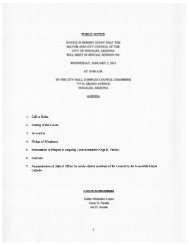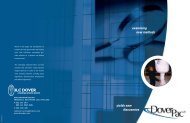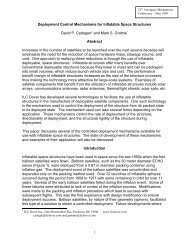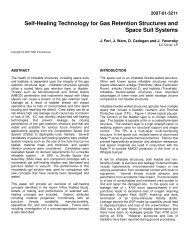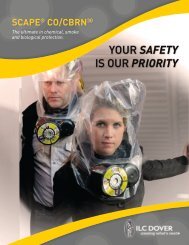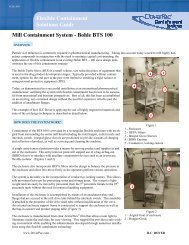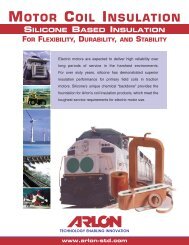A Novel Concept for Stratospheric Communications ... - Team-Logic
A Novel Concept for Stratospheric Communications ... - Team-Logic
A Novel Concept for Stratospheric Communications ... - Team-Logic
You also want an ePaper? Increase the reach of your titles
YUMPU automatically turns print PDFs into web optimized ePapers that Google loves.
Polyester Film, Clear, 0.5 milAdhesiveFabric, PolyesterFigure 12. Baseline Envelope Material Lay-upIn addition to cost and strength considerations, the hull material has also been selected <strong>for</strong> its low areal weight,low permeability, and its compatible with state-of-the-art airship envelope manufacturing processes. A polyesterfabric is used to provide strength in the warp and fill directions while a polyester film layer is bonded to the fabricusing an adhesive to create a barrier layer to contain the helium inflation gas. The baseline coated fabric hullmaterial has a tensile strength of 60-lbf/in in the warp direction and 120-lbf/in in the fill direction. Related UVexposure testing indicates that this hull material will have the endurance to withstand the UV environment above80,000 feet <strong>for</strong> the 6 week mission, as a similar material was originally selected as a candidate hull material <strong>for</strong> theAlternate Ultra-Long Duration Balloon (AULDB) concept 9 . The AULDB program had an intended mission durationof 100 days at 100,000 feet.One immediate outcome of the initial sizing model sensitivity runs was the strong influence that the maximumtemperature increase has on the size and weight of the envelope. Accordingly, one of the main objectives <strong>for</strong> thisinitial model was to estimate the maximum diurnal increase in temperature. The thermal analyses were run at vernalequinox with latitudes between 0 and 45 degrees. The estimate <strong>for</strong> maximum temperature increase wasapproximately 32C and came from a run with 0 degree latitude. A plot of the helium temperature <strong>for</strong> this case isshown in Figure 13. This value of diurnal temperature increase was an important input <strong>for</strong> subsequent sizing andstress analysis modeling. It was found that the temperature results from the thermal analysis were in good agreementwith those from the trajectory modeling. As part of the trajectory modeling, the diurnal temperature result was usedto calculate the pressure change in the balloon envelope as shown in Figure 14.The sizing model contains a first order <strong>for</strong> maximum stress in the upper stage under a uni<strong>for</strong>m inflation pressure.A more detailed stress prediction is needed to support the design ef<strong>for</strong>t of the upper stage. A finite element modelwas constructed <strong>for</strong> the upper stage with the intent of evaluating stresses due to maximum super pressure. A quartersymmetry model was constructed <strong>for</strong> this task. The mesh <strong>for</strong> this model is shown in Figure 15 along with someprinciple stress contour results. The results indicated that the first order calculation in the preliminary sizing modelwas over predicting stress by a small margin. The sizing model <strong>for</strong> the upper stage was updated with this moredetailed stress prediction.11American Institute of Aeronautics and Astronautics



